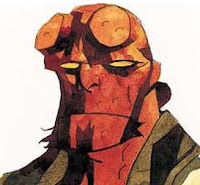 |
| Pieter Bruegel the Elder, Landscape with the Fall of Icarus, ca. 1558 |
Wherever your life ends, it is all there. The utility of living consists not in the length of days, but in the use of time; a man may have lived long, and yet lived but a little. Make use of time while it is present with you. It depends upon your will, and not upon the number of days, to have a sufficient length of life. Is it possible you can imagine never to arrive at the place towards which you are continually going? and yet there is no journey but hath its end. And, if company will make it more pleasant or more easy to you, does not all the world go the self-same way?
— Michel de Montaigne, “That to study philosophy is to learn to die,” Essais
Many years ago, perhaps before I first had children or certainly not much later, I often had occasion to walk across the pedestrian bridge which connected the Winter Garden of the World Financial Center in Battery Park City with the World Trade Center complex. The Winter Garden, for those of you unfamiliar with it, is a large, glass-enclosed atrium which overlooks both the site of the former World Trade towers on the east and the Hudson River and Battery Park City boat marina on the west. It is a curious, echoing space, formed from the gap between two of the office towers which make up the World Financial Center, windowed over with arching glass and metal, and rather incongruously punctuated with sixteen large palm trees planted inside in four rows along its long axis. When I frequented it, Battery Park City was still only half-developed, and the portion of the artificial landfill lying north of Vesey Street on which it sat was indifferently and incompletely developed. Now, of course, the northern part of the area is fully built out, with office buildings, schools, residential towers, and the gleaming new world headquarters of the investment bank Goldman Sachs.
The Winter Garden remains, but the glassed-in pedestrian bridge which connected it across West Street to the World Trade Center complex beyond—leading one down stairs or escalators into the bowels of the underground Concourse which covered the Trade Towers’ footprint in a maze of shops, restaurants, and even deeper escalators into the PATH train station to New Jersey—is gone, partially destroyed in the collapse of 9/11 and fully removed thereafter. The Winter Garden entryway which led to it is now closed, taken up instead with informative displays and tourists overlooking the reconstruction site of the new Freedom Tower and memorial gardens for the towers. It is a rather forlorn place architecturally now, a formerly busy entrance and exit which has been reduced to a window box on past horror and future resolve.
The bridge is gone now, as I said, but it was fully open and functional one rather unremarkable day many years ago when I crossed from the Winter Garden on my way east, on an errand or errands unremembered. About a quarter of the way across, as I walked 20 or 30 feet above the busy highway that was and is West Street, I noticed something which made me stop and stare. Stopped in the left lane almost underneath the bridge was an empty gray or green cargo van. In its front hood was a deep, v-shaped dent, and ten or so feet in front of it, on the ground, lay a motionless form underneath a light-colored tarp. A police car parked perpendicular to traffic with its lights flashing and long, s-shaped skid marks on the asphalt told the basic story: a pedestrian crossing the road had been hit by a speeding van, and the momentum of the car had carried it and its victim a good 150 feet before it skidded to a stop. You could fill in the rest, if you wanted to. The corner of West and Vesey was a bad one, with many blind spots—the plot where Goldman Sachs now stands was an empty lot. It would be easy to speculate the pedestrian had started across a green light in front of a stopped car, and the van, which sped up to catch the light, barreled through the red light and hit the unseen person just as he stepped in front of it. Or perhaps the pedestrian, as so many of us New Yorkers are wont to do, decided to jump the red light and cross against it, judging he had time to beat the speeding van or simply never seeing it in the first place. In any event, the outcome was clear. The only comfort one could take, if comfort it was, was the likelihood that the victim died instantly. You could guess this from the fact that two empty men’s shoes still lay in the crosswalk, 150 feet from where his body eventually ended up.
Now this incident from 15 to 20 years ago made a deep impression on me, as you can clearly tell. I have told it over and over to my children growing up, as a cautionary reminder that more pedestrians are killed in New York by cars than any other cause, and I have tried to remember its teachings myself as I negotiate the crowded streets of Manhattan in a state of constant hurry and distraction. But I mention it here now for two specific reasons. The first was the incident, reported on Twitter and the news earlier this morning, that Cambridge police had been alerted to a possible shooter carrying a gun and wearing body armor on the campus of The Massachusetts Institute of Technology. A good high school friend of my daughter goes there, so my wife and I spent an anxious half hour texting and calling her parents to warn them and offer help. Fortunately, the report turned out to be unfounded, and her parents had been fully informed throughout, but the incident reminded me of the helpless, anxious panic a parent can feel when their child is in deadly danger far away.
The second incident was when we found out later this morning that an acquaintance we know socially was recently killed by a runaway truck. A woman younger than me, with a husband and two children, struck down in an accident as horrifying as it is common. Two other deaths among people we know, within the past six months, have made this, in my son’s phrasing, a really terrible year. Yet they died from common (though unnatural) causes, too: nothing exotic, nothing unusual, just a fast, irrevocable snuffing out of lives which left little but sadness and horror in their wake.
Educated people are supposed to know that car accidents, self-inflicted gunshot wounds, and bad eating habits are much more common killers than the rare and exotic deaths which terrify us. Your chances of dying in a mass school shooting, an airplane crash, or a shark attack are infinitesimal compared to the quotidian killers which stalk our daily lives. And yet people have been shown to massively overestimate the danger from rare threats and massively underestimate that from common. The people who point this out usually decry it as irrational, stupidity that causes us to make bad decisions which are suboptimal for our survival. Perhaps they are right.
Yet in two real senses this skewed perception of our own deaths is completely sensible, if not completely rational. The first is that the most common sources of unnatural death—like automobiles and fatty foods—are almost ineluctable elements of our daily lives. They are embedded in the woof and warp of society in such a way that it is extremely difficult, if not impossible, to remove them from your life entirely. So we soldier on, pretending not to notice they exist, pooh-poohing the likelihood of their occurrence with the common dodge that such things happen to other people, not to us. Until they do happen to us, or to people we know. When that happens, it is no comfort to realize that such things happen all the time, that the death of your friend or loved one—or your own impending demise—is just not that unusual, just not that special.
The second sense why we miscalculate the likely source of our own death is simply the undeniable fact that, as each of us experience it, our own death is unique. It is unitary and indivisible. It is the only one we have to offer. Statisticians can blather on all they like how an individual’s chance of dying ex ante from Source X is only 1 in 37 million. That does not mean that 1/37,000,000th of your, my, or anyone’s death is going to come from Source X. If Source X kills you, your ex post chance of dying from it is 1 in 1, or 100%. Saying that only 1 in 37 million dies from something does you absolutely no good when you are that one.
I think most people understand this, deep down, if only subconsciously. We all realize, with Falstaff, that we owe God a death. That our death, however inconceivable and unpleasant to contemplate, will happen. But I think most of us would prefer an easy, quick death. Perhaps even one unseen and unexpected, from a common cause just lying in wait right around the next corner. Not from some awful, exotic, harrowing oddity that will both terrify and mark us with strangeness as it kills us. I think I speak for most of us when I say we’d prefer a nice, quiet, homey death. One we are not unfamiliar with.
One we can greet, at the end of the day, almost as an old friend.
© 2013 The Epicurean Dealmaker. All rights reserved.


